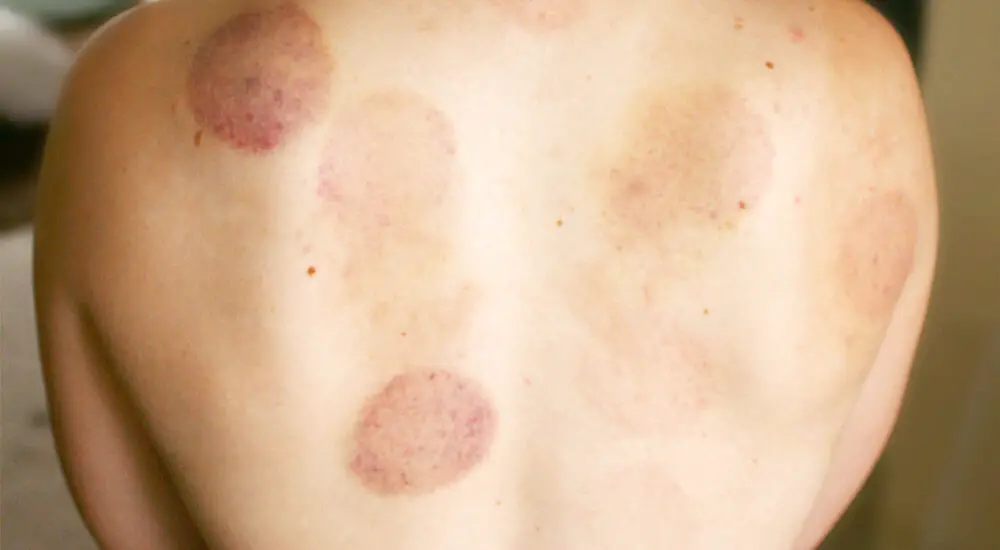Experiencing bruising on skin after exercise is a phenomenon that isn’t uncommon but is often met with apprehension. In this comprehensive guide, we will delve deeply into the causes behind this occurrence and provide you with proven strategies to prevent and manage such bruises effectively.

Table of Contents
Understanding the Causes of Bruising on Skin After Exercise
Bruising on skin after exercise often arises due to trauma experienced by the blood vessels beneath the skin’s surface, specifically the capillaries. When these tiny blood vessels rupture, they release blood into the surrounding tissues, resulting in a bruise. Let’s delve deeper into the common causes:
Direct Impact
This refers to instances where there is a sudden force or contact with a hard surface or object. When you are engaged in exercises involving rapid movements, there is a high chance of bumping into equipment or falling, which exerts pressure on your skin and leads to bruising.
High-Intensity Resistance Training
These are exercises that require you to use a high level of force over a prolonged period. In such training, your muscles exert a significant amount of force on your blood vessels, potentially causing them to rupture and result in bruising on skin after exercise.
It’s imperative to maintain a balanced regimen that includes both high and low-intensity exercises to mitigate this risk.
Improper Use of Exercise Equipment
Not utilizing gym apparatus correctly can create undue pressure and friction on your skin, facilitating bruising. Ensuring you know how to correctly use gym equipment can not only prevent bruising but also avoid serious injuries.
How to Prevent Bruising on Skin After Exercise
Preventing bruising on skin after exercise involves taking certain proactive measures to protect your skin and blood vessels during physical activity. Here, we detail methods that can aid in significantly reducing the risk of experiencing bruises on skin after exercise:
Wear Protective Gear
Utilize protective accessories such as padded gloves, knee pads, and elbow pads to shield your skin from potential impacts during exercise. Selecting gear that is well-fitted can offer enhanced protection.
You can check out these Bodyprox Protective Knee Pads listed on Amazon.
Proper Usage of Gym Equipment
Learn the correct techniques for using different gym equipment to avoid unnecessary pressure on your skin. It’s advised to take guidance from fitness experts or trainers to understand the correct postures and ways to use various gym apparatuses.
Gradual Progression of Workout Intensity
It is beneficial to gradually build the intensity of your workouts. Starting with lighter exercises and progressively moving to more intense workouts allows your body to adapt, minimizing the risk of bruising on skin after exercise.
Check out these other articles…
Itchy Skin After Exercise: Why It Happens & How to Stop It
Rash on Skin After Exercise: 4 Easy Tips to Prevent & Treat
My Skin Looks Better After Exercise: Why This Happens
Bumps on Skin After Exercise: Causes, Types, & Prevention
Salt on Skin After Exercise: Why It Happens & What to Do
Caring for Bruising on Skin After Exercise
If, despite taking preventive measures, you end up with bruising on skin after exercise, timely care can facilitate faster healing. Here, we share a step-by-step guide on how to care for bruises to alleviate discomfort and speed up the healing process:
Cold Compress
Immediately after you notice a bruise, applying a cold compress can help in reducing swelling. You can use a bag of frozen peas wrapped in a cloth or a cold pack for this. It’s advised to apply the cold compress for about 15-20 minutes, taking breaks in between to prevent frostbite.
Elevation
Elevating the bruised area helps in reducing blood flow to the affected region, thus decreasing swelling. Try to keep the bruised part elevated as much as possible, especially in the initial hours following the injury.
Warm Compress
Two days post the bruising incident, switch to applying a warm compress to aid in dissipating the pooled blood and to soothe the area. A warm towel or a heating pad can be used for this, applying it in intervals of 15-20 minutes.
Over-the-Counter Pain Relief
If the bruise is accompanied by pain, you may consider taking an over-the-counter pain reliever such as ibuprofen to alleviate discomfort. However, it is essential to consult with a healthcare provider before taking any medication to address individual health considerations.

